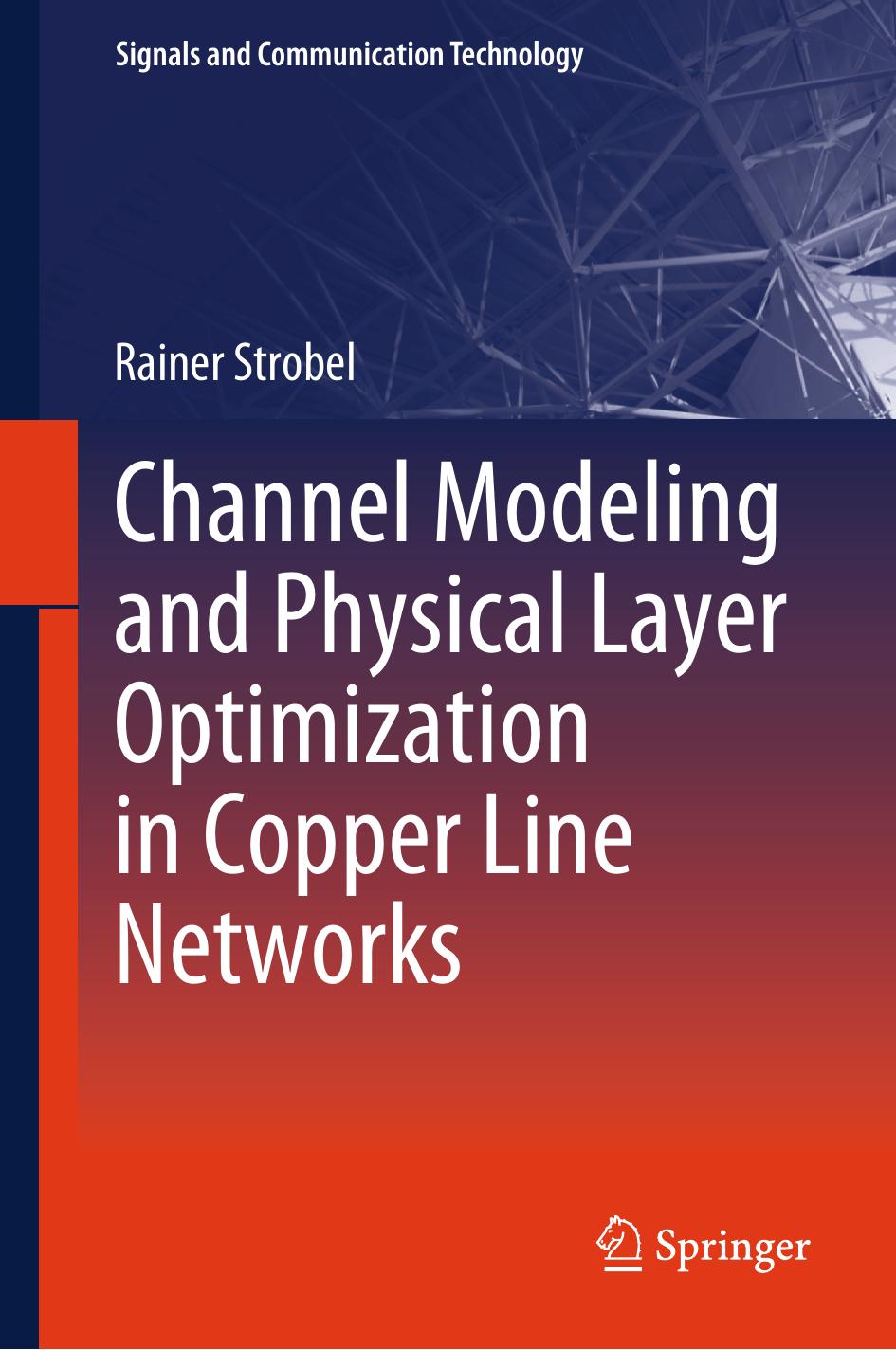Channel Modeling and Physical Layer Optimization in Copper Line Networks by Rainer Strobel

Author:Rainer Strobel
Language: eng
Format: epub, pdf
ISBN: 9783319915609
Publisher: Springer International Publishing
3.6.2 Mutual Couplings Between G.fast and VDSL2
Due to the different duplexing schemes and the overlapping spectrum between 2.2 and , there is crosstalk between G.fast and VDSL2. As shown in Fig. 3.18, there are four different coupling paths.
Each of the four receiving points (VDSL2 Cabinet, VDSL2 CPE, G.fast DP, G.fast CPE) experiences noise from three sources. For the affected (victim) line v, it is caused by NEXT (near end crosstalk) and far-end crosstalk (FEXT) from the disturber line d and receiver noise .
Self-FEXT, the far-end crosstalk between lines of the same service is reduced by crosstalk cancelation. Therefore, G.fast victim lines are disturbed only by VDSL2 lines and the vice versa. The corresponding crosstalk transfer functions are downstream FEXT and upstream FEXT and DP-side NEXT and CPE-side NEXT for subcarrier k.
Fig. 3.18Crosstalk couplings between G.fast and VDSL2
Download
Channel Modeling and Physical Layer Optimization in Copper Line Networks by Rainer Strobel.pdf
This site does not store any files on its server. We only index and link to content provided by other sites. Please contact the content providers to delete copyright contents if any and email us, we'll remove relevant links or contents immediately.
| Circuits | Digital Design |
| Electric Machinery & Motors | Electronics |
| Fiber Optics | Networks |
| Superconductivity |
Whiskies Galore by Ian Buxton(41879)
Introduction to Aircraft Design (Cambridge Aerospace Series) by John P. Fielding(33064)
Small Unmanned Fixed-wing Aircraft Design by Andrew J. Keane Andras Sobester James P. Scanlan & András Sóbester & James P. Scanlan(32743)
Craft Beer for the Homebrewer by Michael Agnew(18140)
Turbulence by E. J. Noyes(7936)
The Complete Stick Figure Physics Tutorials by Allen Sarah(7307)
Kaplan MCAT General Chemistry Review by Kaplan(6867)
The Thirst by Nesbo Jo(6826)
Bad Blood by John Carreyrou(6552)
Modelling of Convective Heat and Mass Transfer in Rotating Flows by Igor V. Shevchuk(6391)
Learning SQL by Alan Beaulieu(6211)
Weapons of Math Destruction by Cathy O'Neil(6144)
Man-made Catastrophes and Risk Information Concealment by Dmitry Chernov & Didier Sornette(5921)
Digital Minimalism by Cal Newport;(5664)
Life 3.0: Being Human in the Age of Artificial Intelligence by Tegmark Max(5474)
iGen by Jean M. Twenge(5366)
Secrets of Antigravity Propulsion: Tesla, UFOs, and Classified Aerospace Technology by Ph.D. Paul A. Laviolette(5309)
Design of Trajectory Optimization Approach for Space Maneuver Vehicle Skip Entry Problems by Runqi Chai & Al Savvaris & Antonios Tsourdos & Senchun Chai(5011)
Pale Blue Dot by Carl Sagan(4912)
